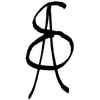|
A quick update to show some progress of my still life painting and to share some methodology from the Florence Academy of Art (FAA). The process so far has been a traditional academic approach going preparatory sketches to finished work. This painting started out with some thumbnail sketches that only focus on value relationships (not detail). Squinting can be helpful throughout the process to keep values simplified--I personally don't squint very much, but it's good to test it out and see what works. The next step was to paint small scale studies. We're not using transfer drawings for the still life, but we are for a larger figurative painting.
We're using a limited palette of: Titanium white, cad. yellow light, yellow ochre, cad red light, ultramarine blue, burnt umber and ivory black. I added a touch of burnt sienna also because the burnt umber that I got from Zecchi is very cool and almost like a Van Dyck brown. Earth pigments can have a variety differences based on where they are mined from. I've always enjoyed limited palettes because it allows me to focus more on arranging values. I like experimenting with colors, but my regular working palette has only a few extra colors beyond this limited palette. FAA also works in sight-size, which is a method where you stand in a specific spot so that your canvas lines up with the subject matter. It's a method that allows the artist to transfer over measurements from a certain vantage point. I find the method to be very structured and works within a framework of specific circumstances. Either way, it's taught me the importance of stepping back from my work and seeing the painting as a whole. *You'll see the photo of my still life below was taken at a different angle from my sight size viewing location. The process is very rigorous and has pushed my skill level further. It can be a difficult process mentally and physically and reminds me of training for athletics. I'm very thankful for this MA program because I've always wanted to learn these time-honored methods. We had class today and my still life is still in progress so I'll share more as it develops! No class tomorrow so I'll be getting chores done and taking it easy :)
0 Comments
Today was a free museum and garden day in Florence so my roommate and I walked over to the Boboli Gardens and passed some iconic spots along the way. We walked past Dante's house and I got my first look at the Palazzo Vecchio before crossing the Ponte Vecchio--all of which was pretty amazing. Florence seems pretty compact so the walk wasn't very far. The terrain was very hilly which provided a great workout and a fantastic view of Florence. The gardens themselves were larger than I imagined and we really enjoyed exploring all the areas. Each area had its own beautiful and I'd love to spend more time in each. One of my favorite areas had beautiful aquatic plants and water lilies, which I wasn't expecting to see. As an artist and art historian, one of my main reasons to visit the Boboli Gardens was because John Singer Sargent's painted there. And now I can see why Sargent enjoyed painting in these beautiful gardens. The mixture of the garden and classical sculpture was visual stunning and made me want to paint. I did some sketching, but I'd love to go back with my watercolors. I would definitely go back to see these gardens again and I recommend anyone visiting Florence to also visit them! Palazzo Vecchio and the Ponte VecchioGiardino di Boboli
I just got back from an amazing trip to Bermuda! It was my first time in Bermuda and it was really amazing. The weather, colors, culture, food and drinks of the island were wonderful. The locals were also super friendly and taught me a lot about their unique environment. I packed my watercolor plein air kit and got a lot of painting done. Many things caught my eye, but I was particularly impressed with the pink color of many of the homes, which is beautifully complemented by the blues and greens of the ocean. By the way, I learned that some of the beaches have pink sand because pink shells have been ground up by the waves over many years and mixed with the sand. Also, the roofs have a unique shape to collect rainwater because there is no freshwater source on the island. And there were many beautiful flowers such as hibiscus. For me, painting is a way of remembering special places and moments. It's also a reason for me to explore and learn about different countries. I can take my paints anywhere in the world and it gives me a connection to that area. I'm so thankful that I got to paint in this beautiful country. I only wish we could have stayed longer.. I guess I'll have to go back! The Original Rum Swizzle | "Bermuda's National Drink" We had a great time today at the Presby Memorial Iris Gardens in Upper Montclair, N.J. The variety and color range of these irises is really stunning. It's a large property and the irises are divided by the age of the variety; some were from the 1700s. Each iris is also labeled with specific information.
Photos don't do justice to these beautiful flowers so I recommend that you view them in person. They close the first week of June. |
Archives
July 2024
Categories
All
|


































































 RSS Feed
RSS Feed